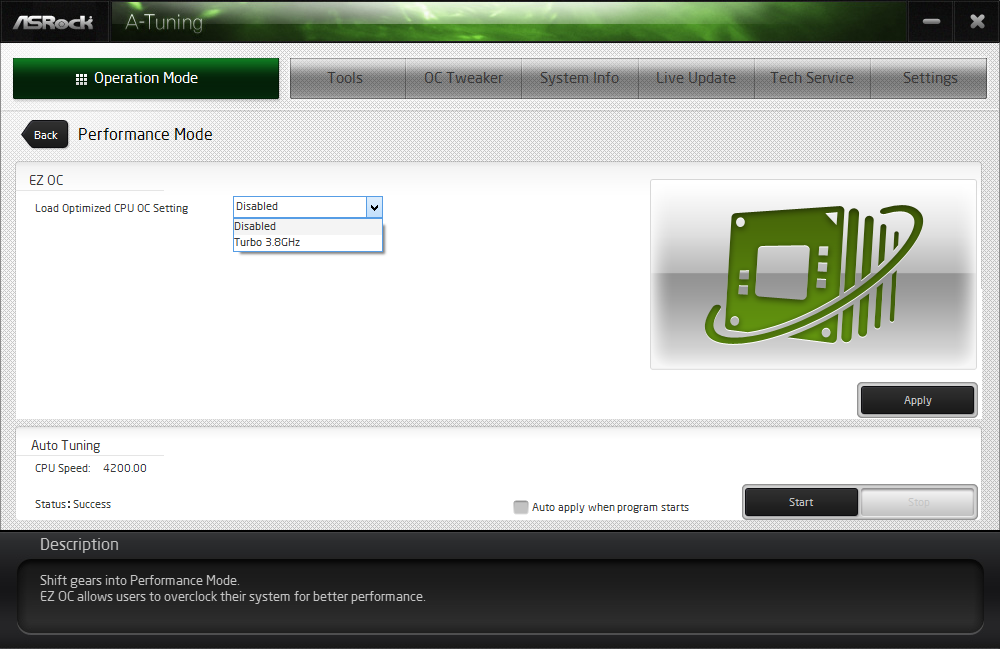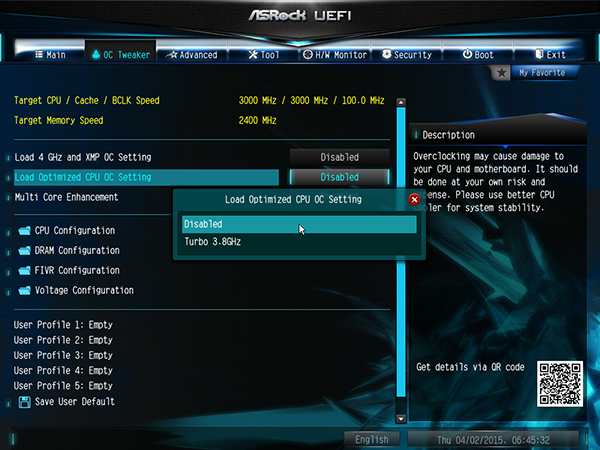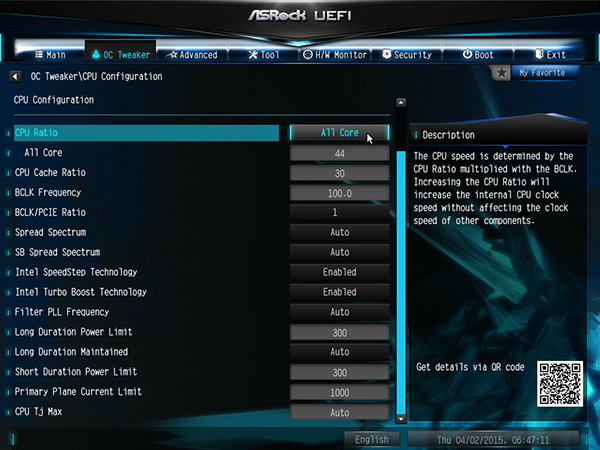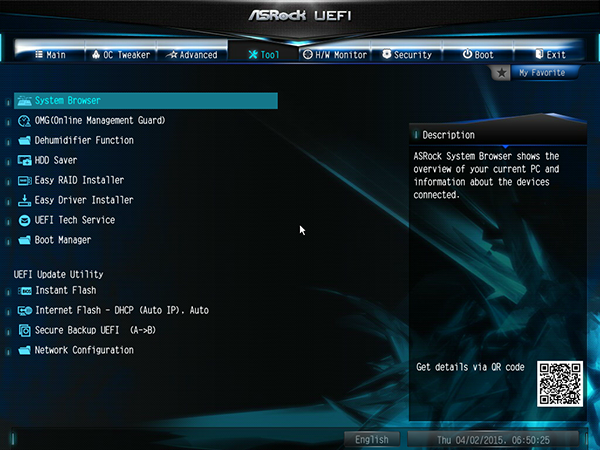ASRock X99 Extreme3 Review
Why you can trust Tom's Hardware
X99 Extreme3 Software And Firmware
ASRock’s X99 Extreme3 still includes the cFos network optimization interface and restart-to-UEFI utility seen in some of our previous reviews, but these are also found in its A-Tuning software. Today we’re going to show a few more images from that package.
Though it might be designed for a lower-cost market, we needed to see how the X99 Exteme3 would stand up to more expensive motherboards in overclocking and performance tests by using it with the same processor. For better or worse, that CPU is a Core i7-5960X. The better comes with a 4.2GHz Auto Tuning overclock at the same 1.2V setting as the board’s “Turbo 3.8GHz” factory-defined overclocking profile.
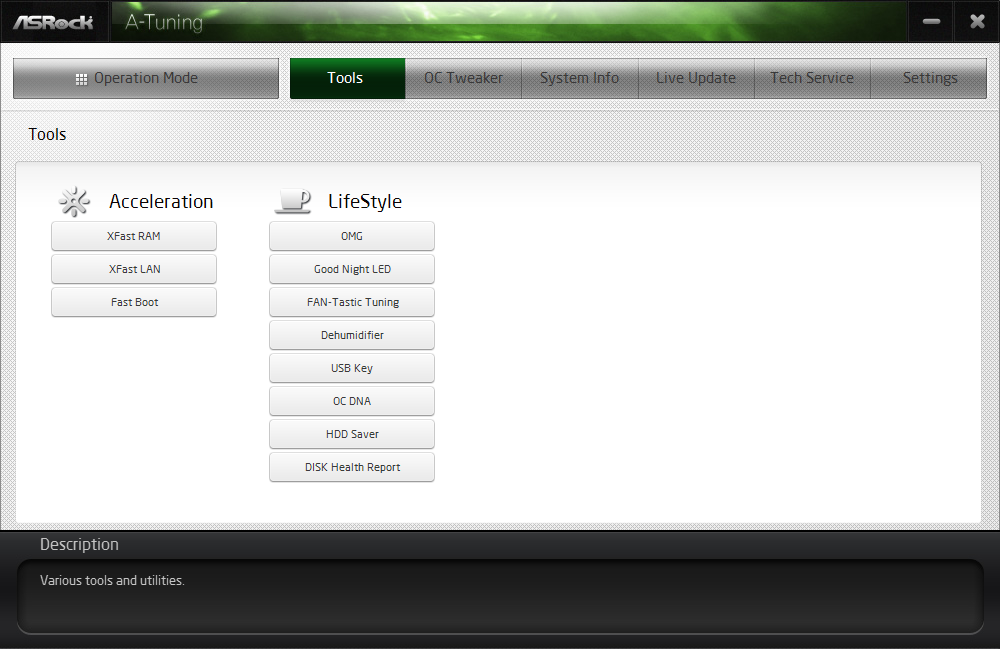
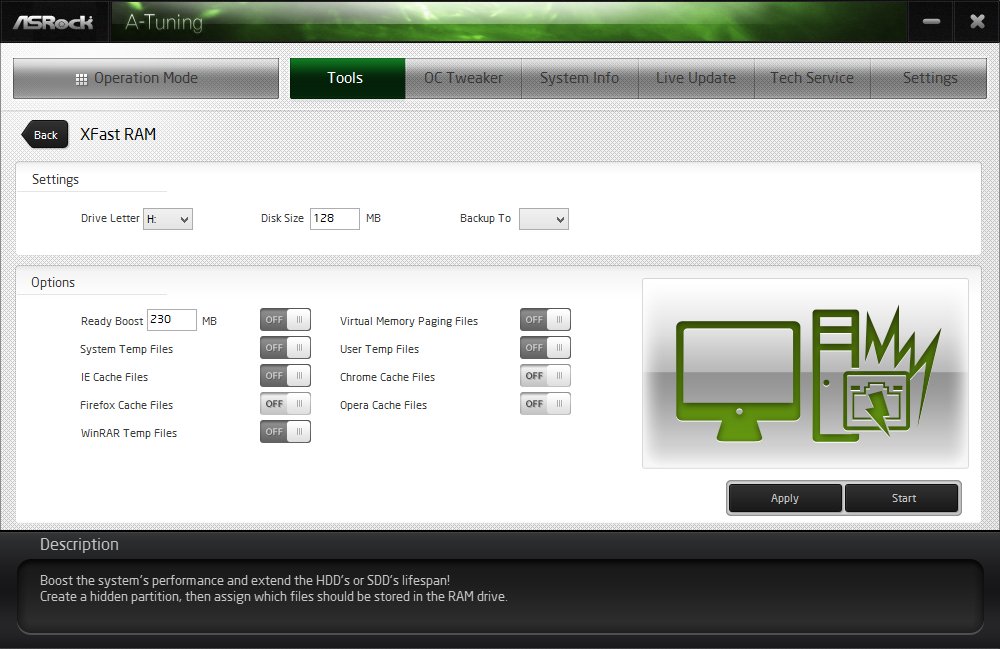
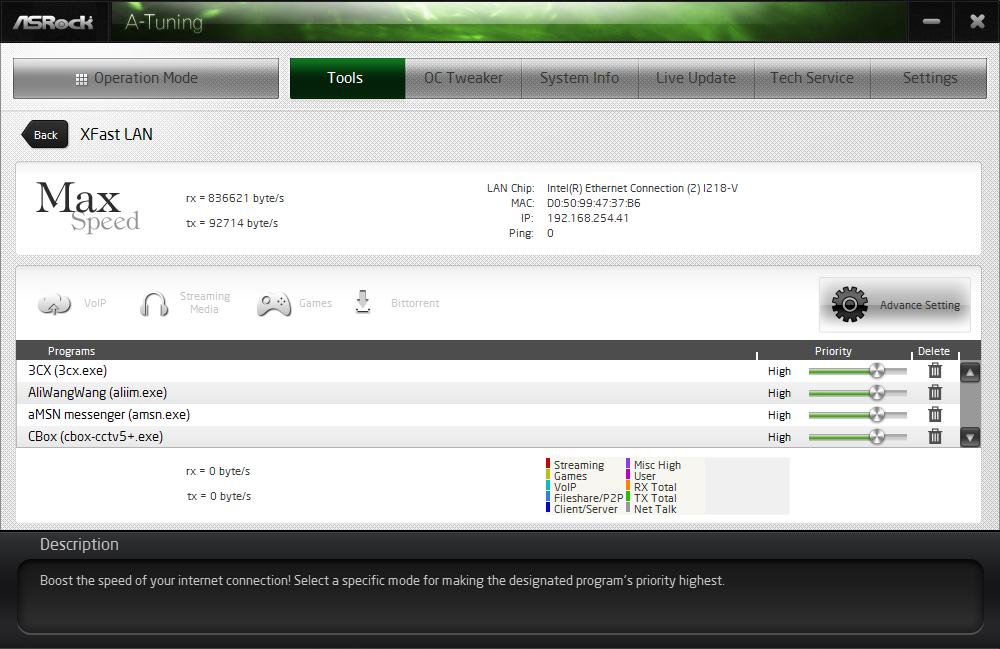
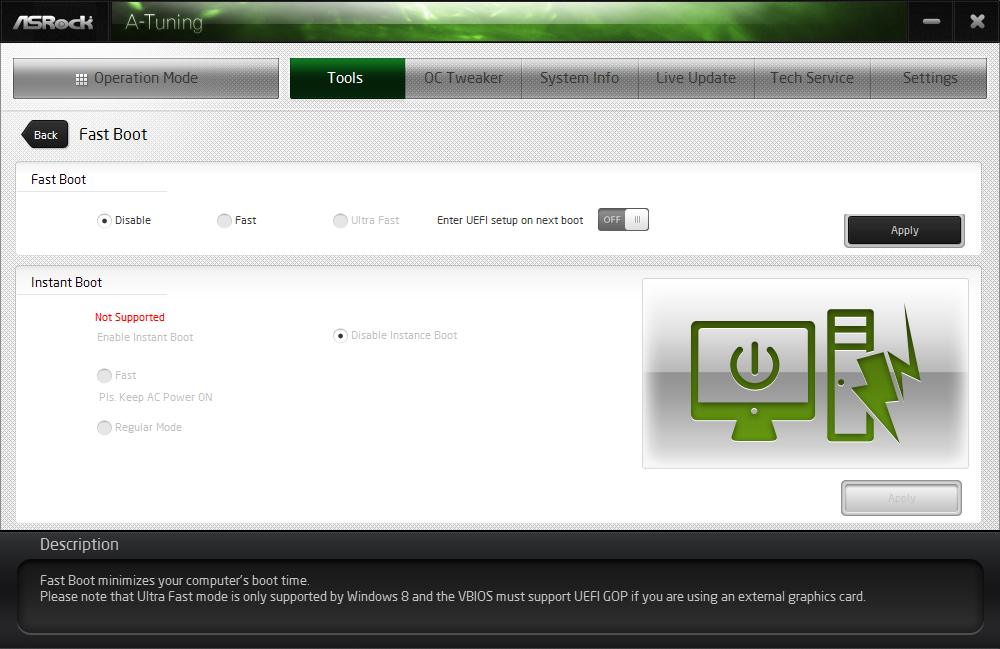
The “Acceleration” suite of ASRock A-Tuning includes XFast RAM drive virtualization (RAMDisk), an alternative XFast LAN interface for the included cFos packet prioritization suite, Fast Boot to skip hardware detection in Windows 8 (UEFI mode) and an option within the Fast Boot menu to enter UEFI directly upon the next boot cycle.
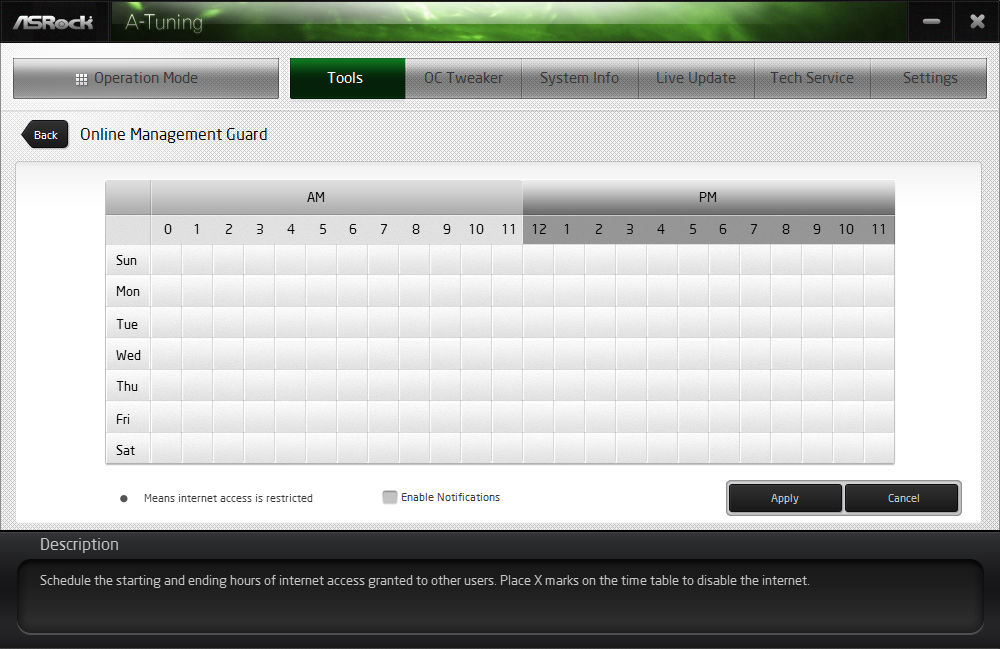
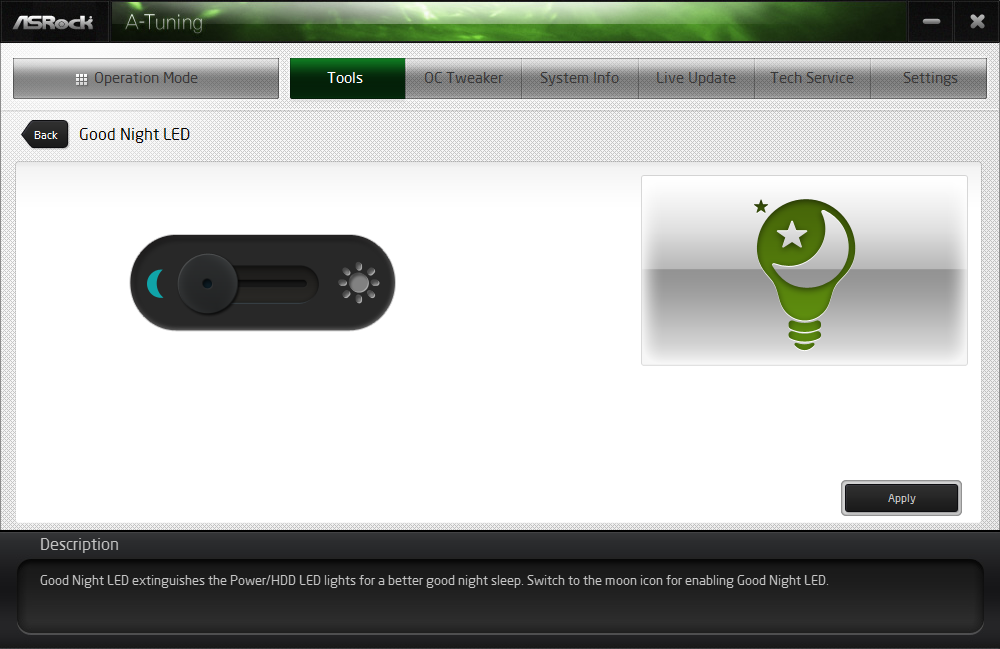
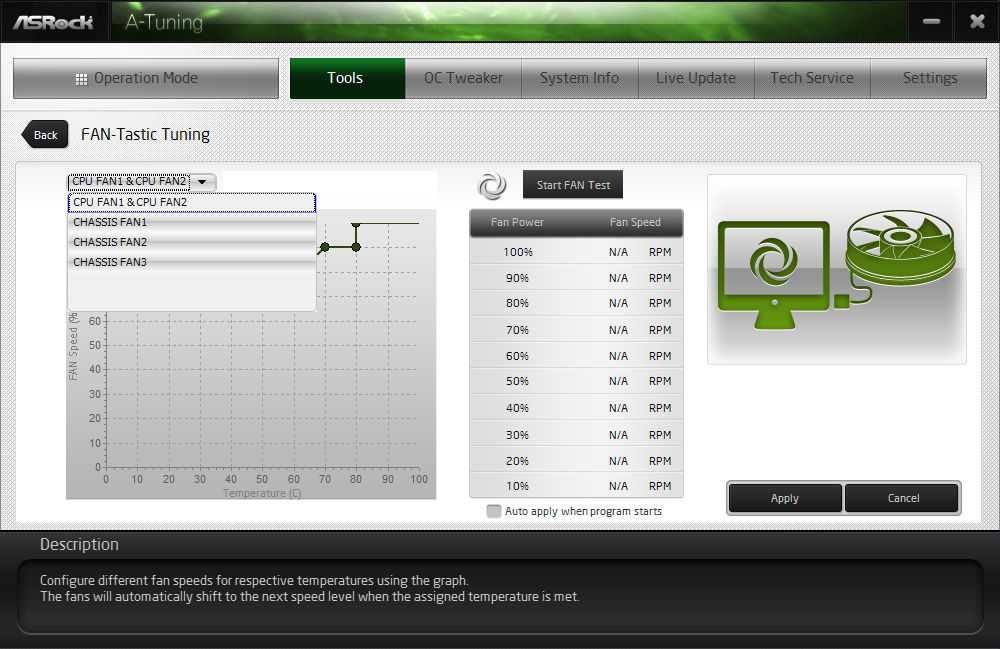
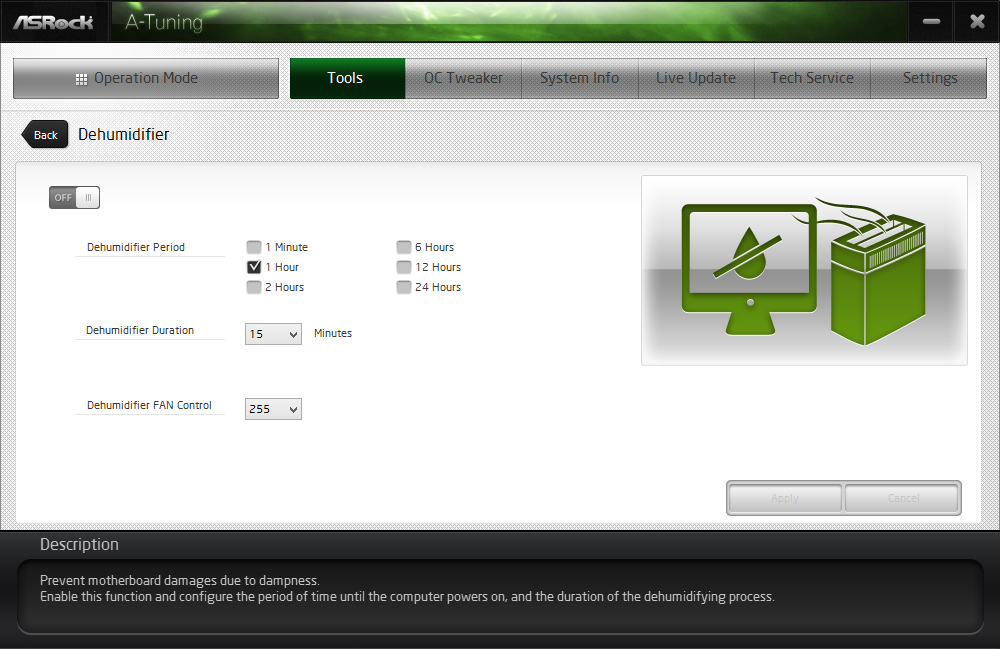
The “Lifestyle” list of tools starts off with ASRock Online Management Guard network access scheduling (for other users), Good Night LED for disabling the front-panel CAS LEDs, “FAN-Tastic” tuning to set up thermally-based fan RPM maps on five of the board’s six headers and “Dehumidifier” to cycle an artificial load for removing moisture. That last feature might be especially useful in Taiwan.
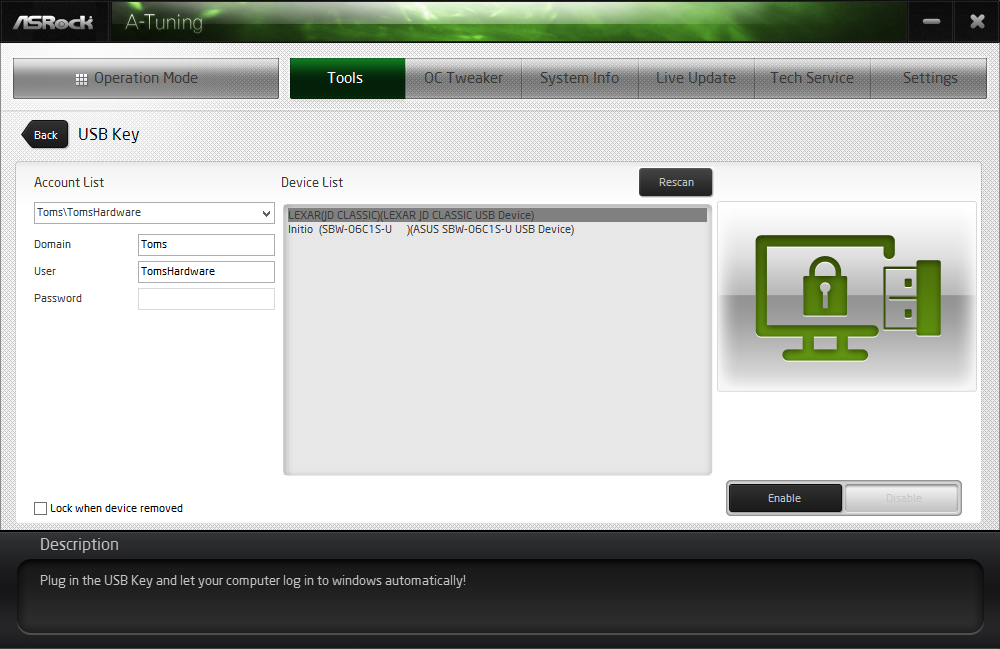
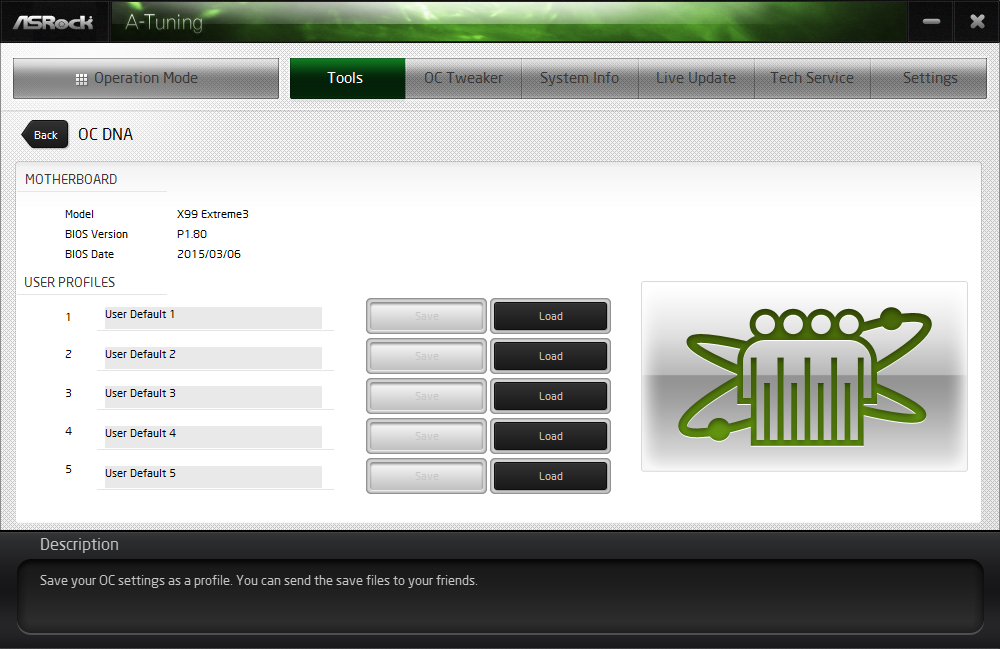
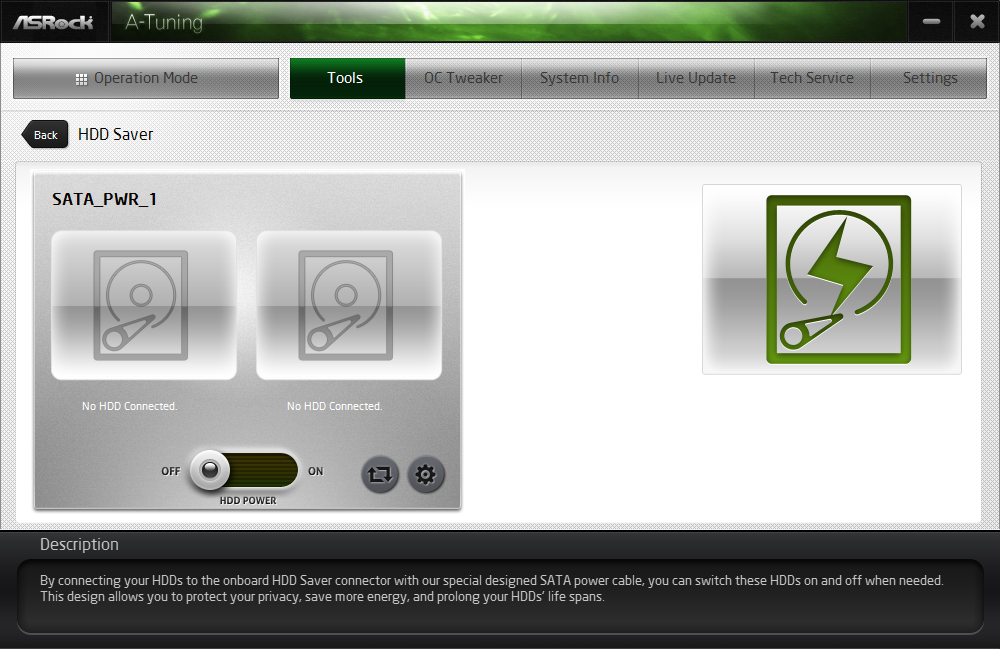
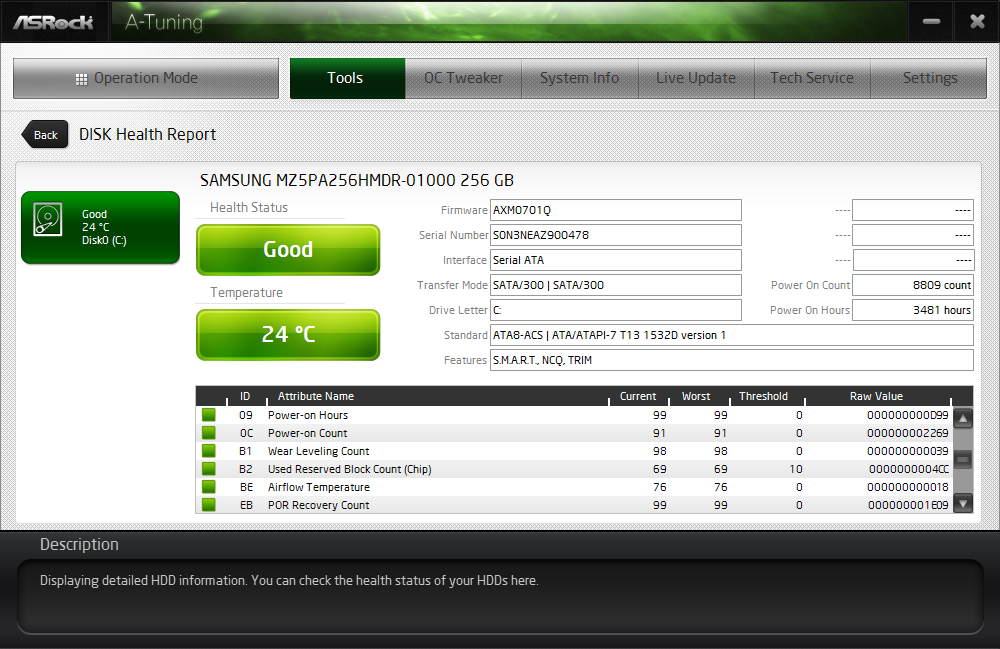
ASRock USB Key lets you log in by connecting a thumb drive loaded with the digital key. Other “Tools” include an OC profile section called “OC DNA”, the HDD Saver utility to turn off drives connected to its motherboard-interfaced power cable and a DISK Health Report that shows my benchmark drive is only 3481 hours old!
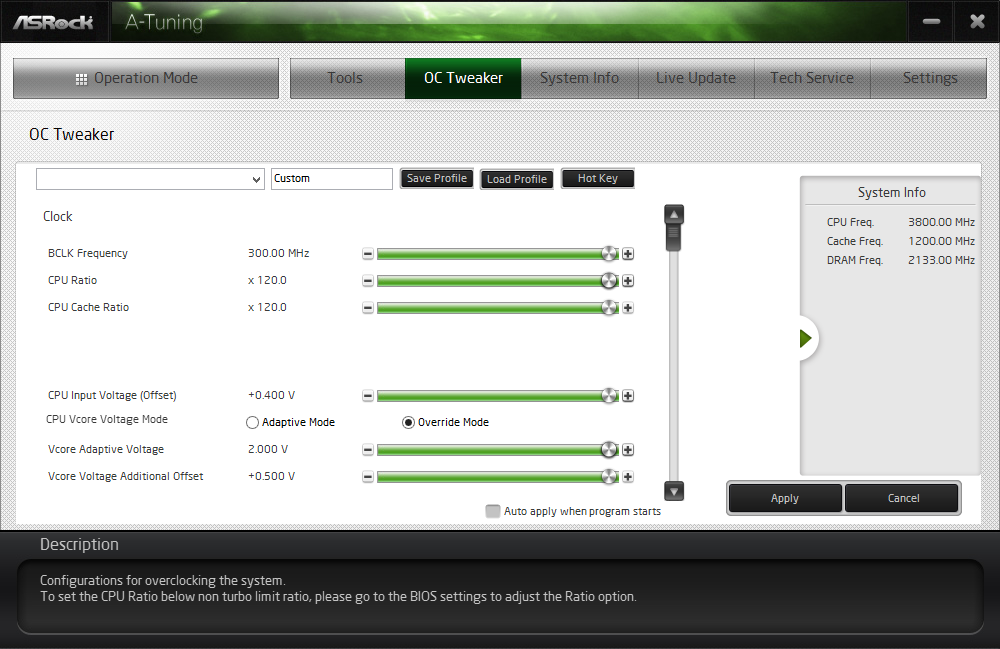
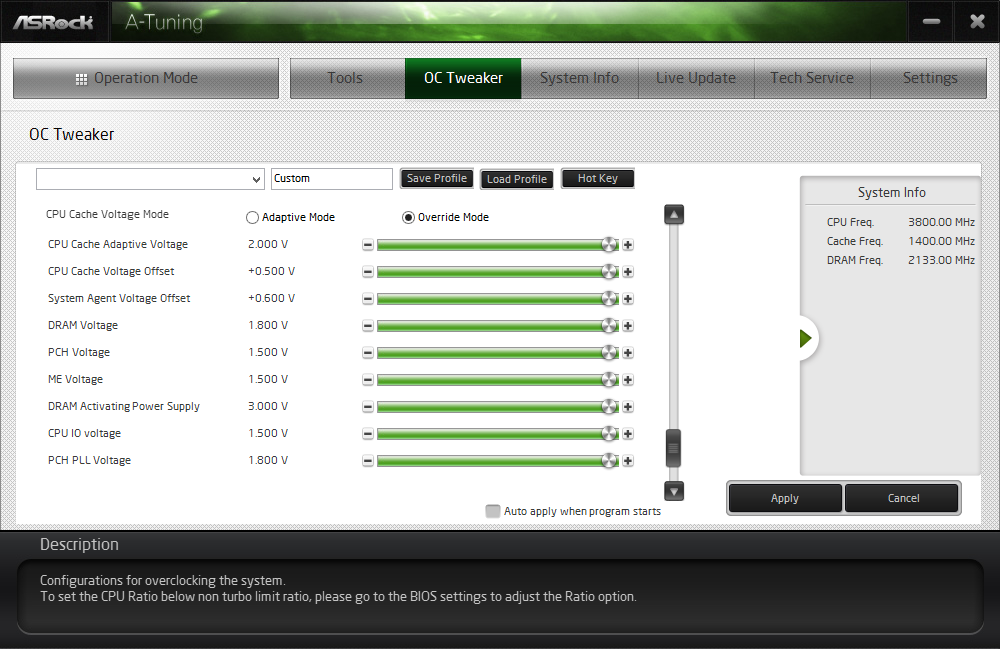
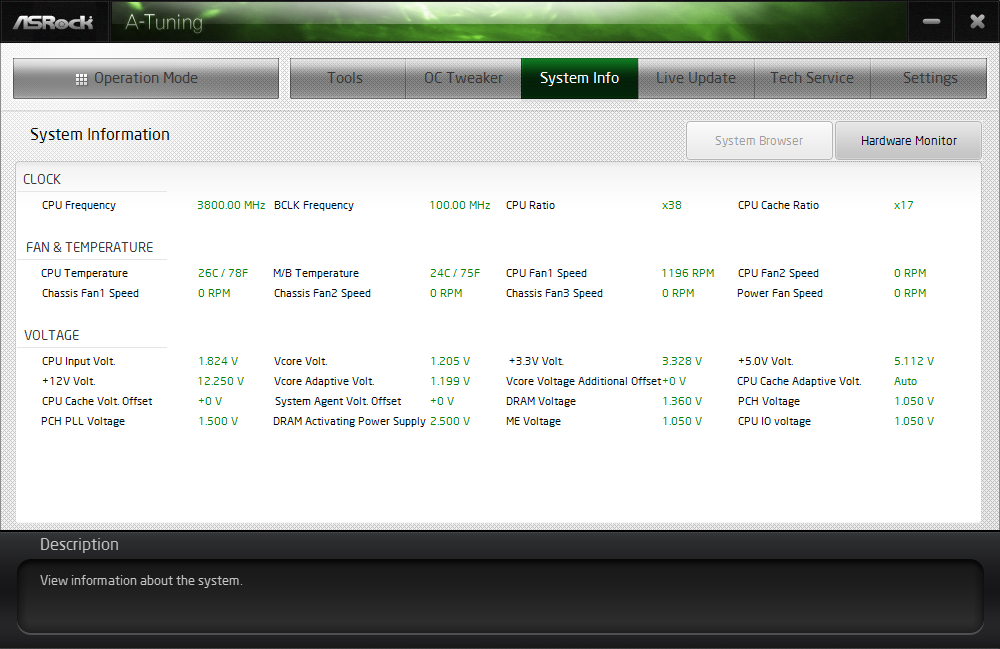
Manual overclocking through software is available throughout the entire range of X99 Extreme3 firmware. ASRock recommends that certain settings should be changed through firmware, and the overclocking professionals I’ve watched typically typically use software only for fine-tuning (or for benchmarking with settings that aren’t bootable).
The “OC Tweaker” menu starts with a “Load 4 GHz and XMP OC Setting”, which didn’t work for our combination of CPU and DRAM, and a Turbo 3.8 GHz setting, which worked but didn't include XMP. Further investigation showed that the core voltage level for the 4GHz and XMP setting were a little too low (at 1.18V fixed), and the DRAM voltage was a little too high (at 1.38V) for this fussy CPU.
Get Tom's Hardware's best news and in-depth reviews, straight to your inbox.
Heat became an issue for the X99 Extreme3’s six-phase voltage regulator at 4.45GHz, even with a 120mm low-speed fan blowing onto its sink. The board was completely stable at 4.4GHz, and heat could have been reduced by using a lower-end CPU with fewer active cores.
The X99 Extreme3 stays within Intel’s specified 10x memory multiplier limit, reaching DDR4-2666 using a 4:3 memory controller to CPU core ratio. It also supports XMP-3000 by reducing the multiplier to 9x and increasing the CPU base clock to 125MHz, though the board pushes a 30 to 35mV bias beyond set memory voltage. This CPU's memory controller loses stability as it approaches 1.37V, and the 1.32V setting produces the desired 1.350 to 1.355 volts.
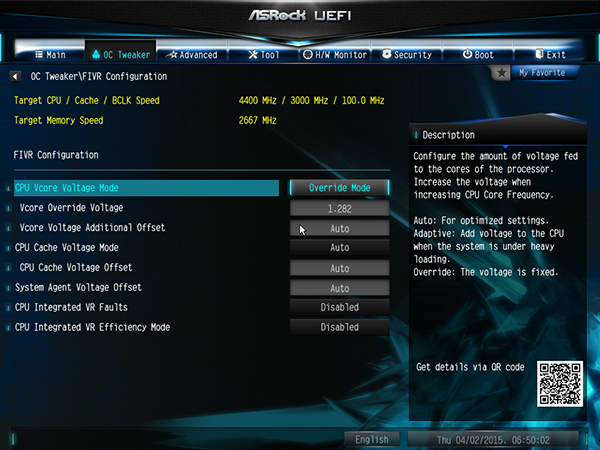
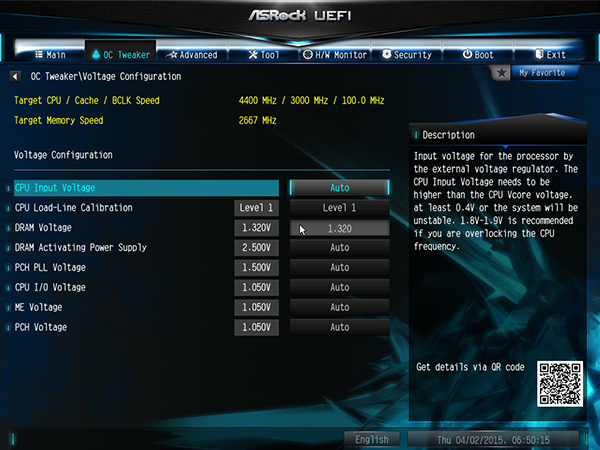
Settings for the CPU’s integrated voltage controller are found within the X99 Extreme3’s OC TweakerFIVR Configuration submenu. External voltage regulation settings are within the OC TweakerVoltage Configuration submenu, including CPU I/O, PCH and a redundant DRAM voltage setting.
Many of the features from A-Tuning are adjustable from firmware, such as Online Management Guard, Dehumidifier and HDD Saver. The X99 Extreme3 also contains a utility for copying RAID drivers to a thumb drive, accessing additional drivers from ASRock’s web server and contacting the company for email-based tech support.
Current page: X99 Extreme3 Software And Firmware
Prev Page X99 Extreme3 Layout Next Page Synthetic Benchmarks